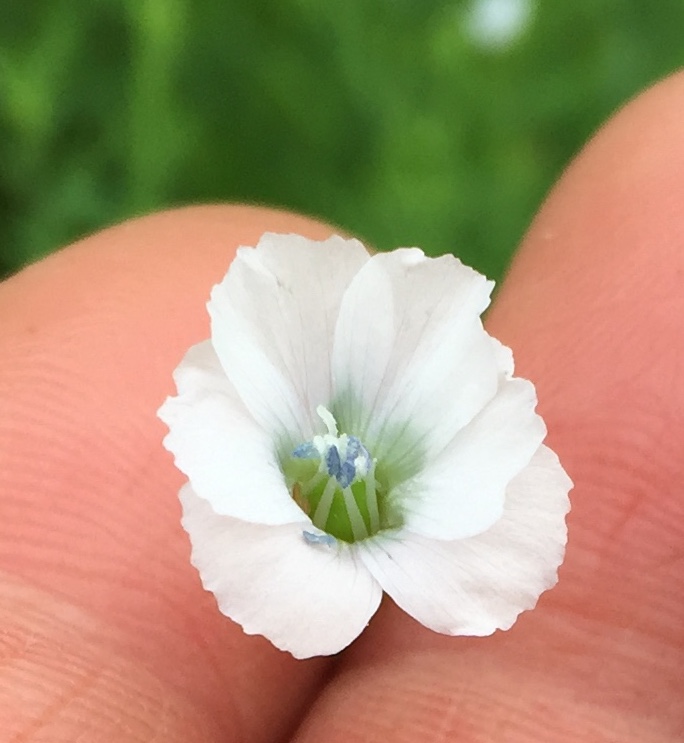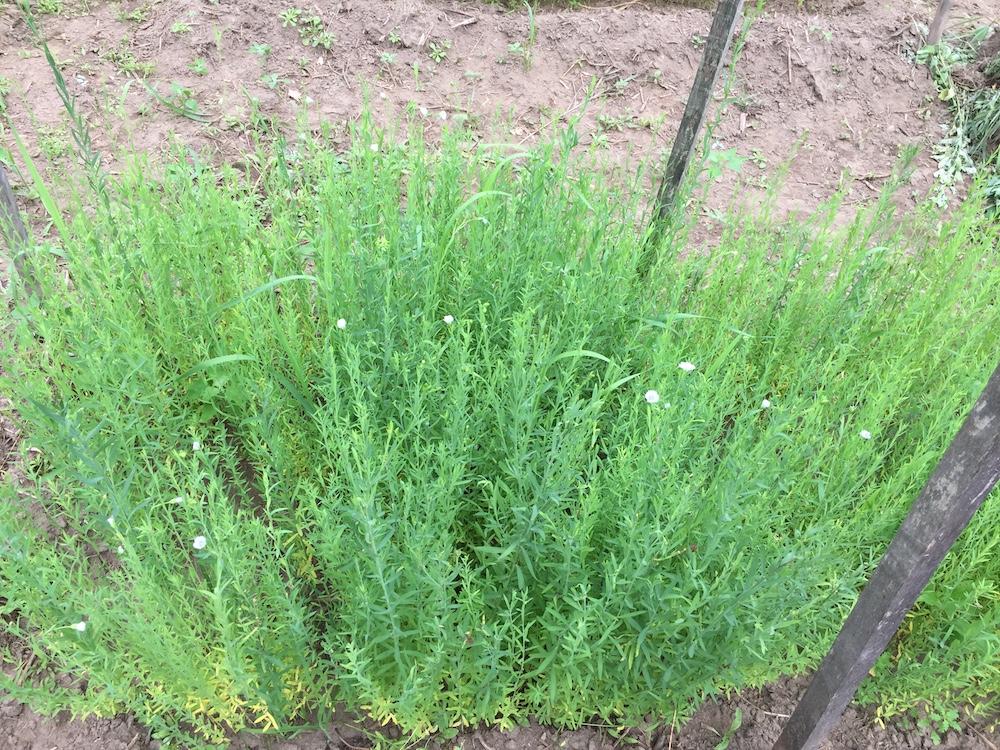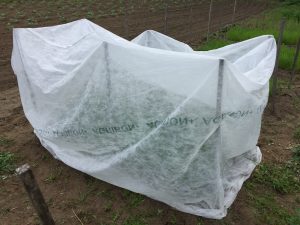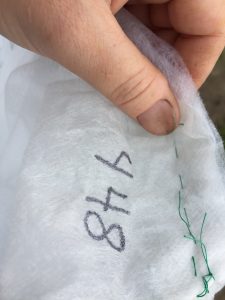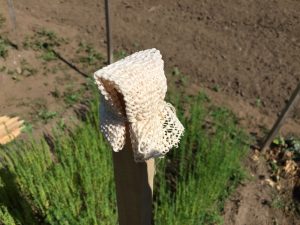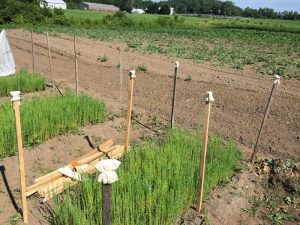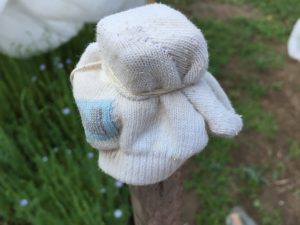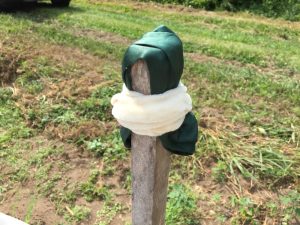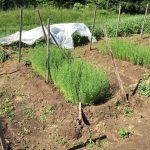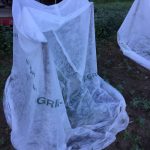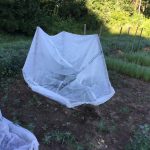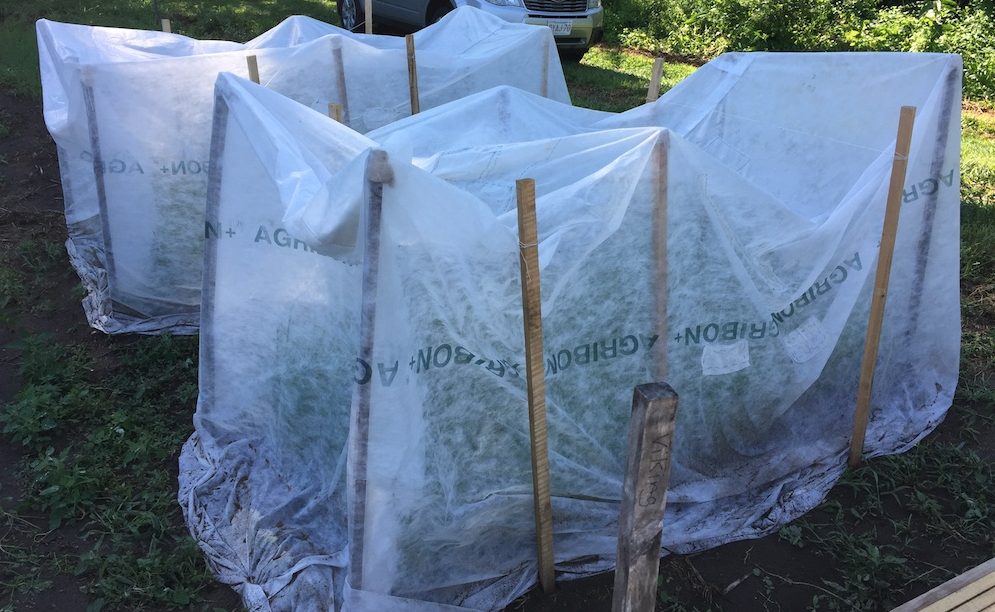In July, the flax started blooming. Usually my flax is blooming in June, but I planted really late this year. I decided to cover the beds again this year to keep the varieties isolated. Depending on whose advice you follow, covering isn’t strictly necessary. It’s labor intensive, admittedly, but it gives me a sense of security that the seed I’m saving from the types I originally got from the USDA are as true as possible to the way that I received them.
The earliest type to start flowering was the one nicknamed 448, which started to flower on July 4th, 37 days after planting. It’s a white flowering type:
Here’s the whole patch:
As each variety started to bloom, I covered it with a tent made of Agribon and staked it down around the bottom to dissuade pollinating insects from getting in. I will spare you the detailed photos I took of each and every type as it started to bloom. Here’s the short version: the earliest variety flowered at 37 days after planting, and the latest at 58 days on July 25th.
Because I made each bed a different size this year, sewing the covers was tricky because each bed had a different circumference. Fortunately, it’s not like custom tailoring and my crude imprecision was not an issue. Here’s the cover in place on the 448:
Originally I just draped the covers over 4 foot hardwood stakes, but I knew that the areas where the Agribon abraded against the sharp corners of the wood were prone to tearing. So I hit on an ingenious solution, if I do say so myself. I padded the tops of the stakes. At first I used some rubbery material that is sold for padding kitchen cabinets (but which I use to keep my reeds from slipping inside the beater on my loom):
I didn’t have a lot of this stuff, and a little did not go a long way. It seemed foolish to spend money on this kind of a temporary hack, so next I turned to my basket of long un-used scrunchies (from the days when I had enough hair to wrap in a scrunchy) and my basket of un-paired and worn out socks:
I have no need of scrunchies these days, plus the elastic is shot. The padding worked amazingly well, and I had practically no tearing or abrasion over the season.
The second design challenge I encountered was the effects of high winds and heavy rain. We had a very thunderstormy month in July. I was disappointed but maybe not too surprised after the first big storms to find that the tents had collapsed:
I figured that the wind was causing the tents to billow like huge balloons and pull too hard on the stakes. So, I added extra stakes on the outside, and wrapped twine across the top to keep the Agribon from billowing out too far:
After a couple more storms, I added twine to the south side of the beds (the beds were more exposed on the north side). With these reinforcements, the tents lasted through the rest of the rainy, wet, stormy month:
I’ll write more about the rain in another post.

